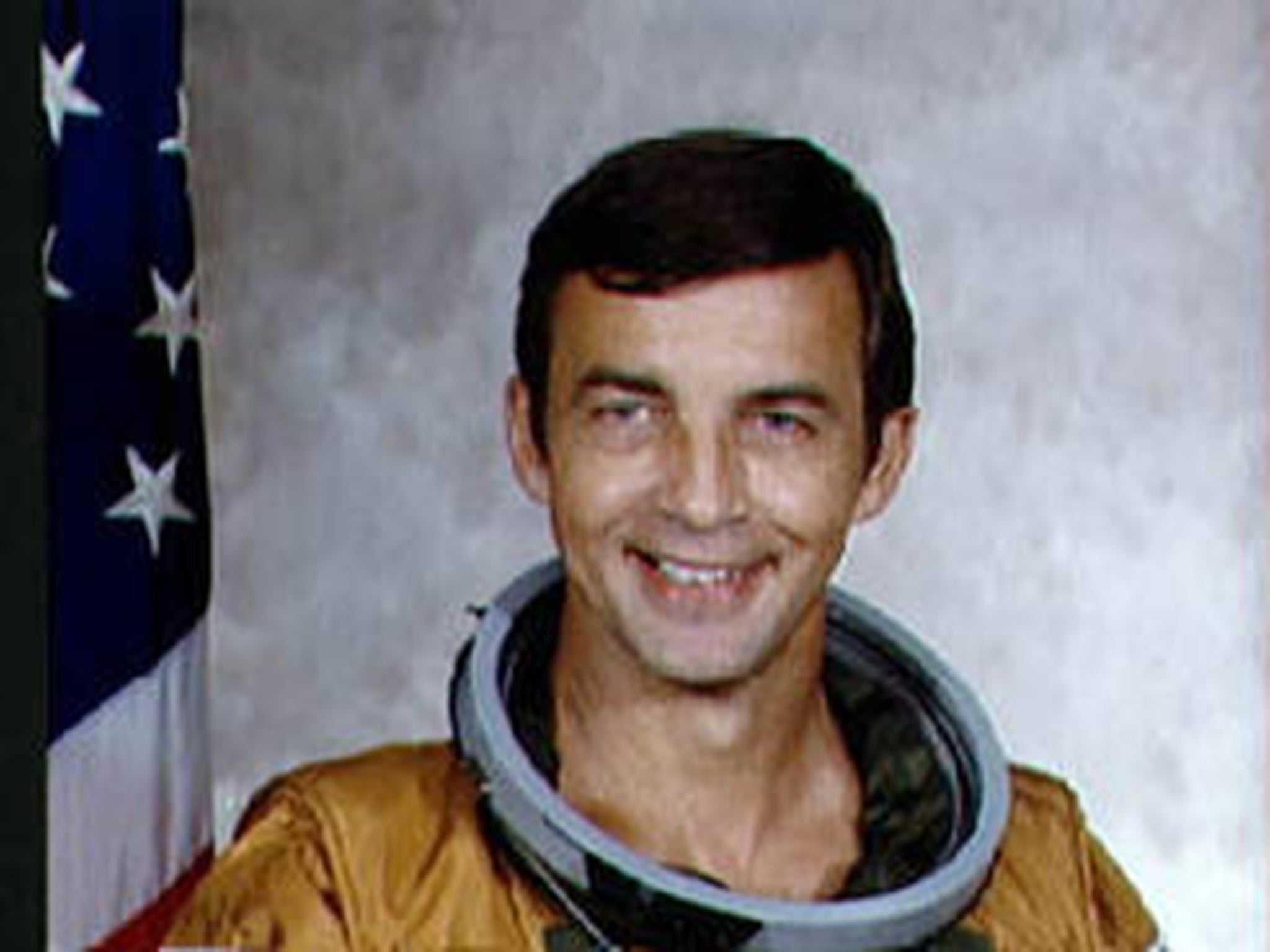Donald Peterson: Nasa astronaut who performed one of the first shuttle spacewalks
Three days into the maiden voyage of the Challenger, Peterson and his fellow mission specialist Story Musgrave made history

Your support helps us to tell the story
From reproductive rights to climate change to Big Tech, The Independent is on the ground when the story is developing. Whether it's investigating the financials of Elon Musk's pro-Trump PAC or producing our latest documentary, 'The A Word', which shines a light on the American women fighting for reproductive rights, we know how important it is to parse out the facts from the messaging.
At such a critical moment in US history, we need reporters on the ground. Your donation allows us to keep sending journalists to speak to both sides of the story.
The Independent is trusted by Americans across the entire political spectrum. And unlike many other quality news outlets, we choose not to lock Americans out of our reporting and analysis with paywalls. We believe quality journalism should be available to everyone, paid for by those who can afford it.
Your support makes all the difference.Donald H Peterson Sr was an astronaut who served on the maiden voyage of the space shuttle Challenger and performed a spacewalk to test the ability of repairing the vehicle while it orbited more than 170 miles above the Earth.
A US Air Force veteran, Peterson, who died in El Lago, Texas, aged 84, joined Nasa’s astronaut corps in September 1969, two months after Neil Armstrong led the historic first landing on the moon. Fourteen years later, Peterson joined the crew of the sixth Nasa space shuttle mission – and the Challenger’s first flight. (The shuttle exploded in 1986 while on its 10th mission.)
Soviet and American astronauts had conducted spacewalks since 1965, but the ability to exit the shuttle was an important step towards being able to perform repair and maintenance work on a space vehicle.
Peterson and fellow mission specialist Story Musgrave dressed in 250lb white spacesuits with attached backpacks that allowed for greater mobility.
Before exiting the Challenger, Peterson had to breathe pure oxygen for three and a half hours, to gradually reduce excess nitrogen from his body. This was done to avoid decompression sickness, a condition similar to what scuba divers experience when changing air pressures too rapidly.
The fresh oxygen made a “nice whishing sound”, so Peterson turned his receiver down and fell into “probably the best sleep I had on orbit”, he recalled in a Nasa oral-history interview in 2002. “People asked, ‘How in the world can you sleep just before you’re getting ready to go?’ I said, ‘Well, you know, you get tired enough, you can sleep almost anywhere’.”

By 4.30pm, Peterson and Musgrave were in the 60ft cargo bay, checking maintenance materials that future crews would need to preserve and, if necessary, repair the spacecraft. For about four hours, they appeared to move “like underwater swimmers” as the shuttle orbited the Earth at 17,500mph, The Washington Post reported at the time.
The men were roped to the shuttle’s cargo bay while they tested their ability to carry a weighted bag, use a hand winch and perform other tasks.
After launching a satellite, the crew decided they should test what would happen if the electronic motors powering the ability to tilt the collar at the back of the orbiter stopped working.
“We had foot restraints, but it took so long to set them up and move them around, that we didn’t want to do that,” Peterson said in the Nasa interview. “So I just held on with one hand, actually, to a piece of sheet metal, which is not the best way to hold on, and cranked the wrench with my other hand, and my legs floated out behind me. So as I cranked, my legs were flailing back and forth, like a swimmer, to react the load on the wrench.”

During this test, his suit started to leak. “I’ve got an alarm,” Peterson told Musgrave.
“Story stopped what he was doing and came over,” Peterson recalled. “We were trying to check what was going on, and the seal popped back in place and the leak stopped.” They then finished the procedure.
Donald Herod Peterson was born in Winona, Mississippi. His father ran a filling station and sold furniture. Peterson’s avid consumption of science fiction in his childhood drove his interest in aviation and space.
Peterson graduated in 1955 from the US Military Academy at West Point, New York, and in 1962 he received a master’s degree in nuclear engineering from the Air Force Institute of Technology at Wright-Patterson Air Force Base in Ohio.
Early in his military career, he worked for the Air Training Command as a flight instructor and for the Air Force Systems Command as a nuclear systems analyst.
He served 24 years in the Air Force before retiring at the rank of colonel. After leaving Nasa in 1984, he became a consultant on manned aerospace operations. His awards included the Meritorious Service Medal and the Air Force Commendation Medal.
His wife of nearly 60 years, the former Bonnie Ruth Love, died in 2017. In addition to his daughter Shari, survivors include two other children, Don Peterson and Jean Stone; a brother; four grandchildren; and four great-grandchildren.
Donald Herod Peterson, astronaut, born 22 October 1933, died 27 May 2018
© Washington Post
Join our commenting forum
Join thought-provoking conversations, follow other Independent readers and see their replies
Comments